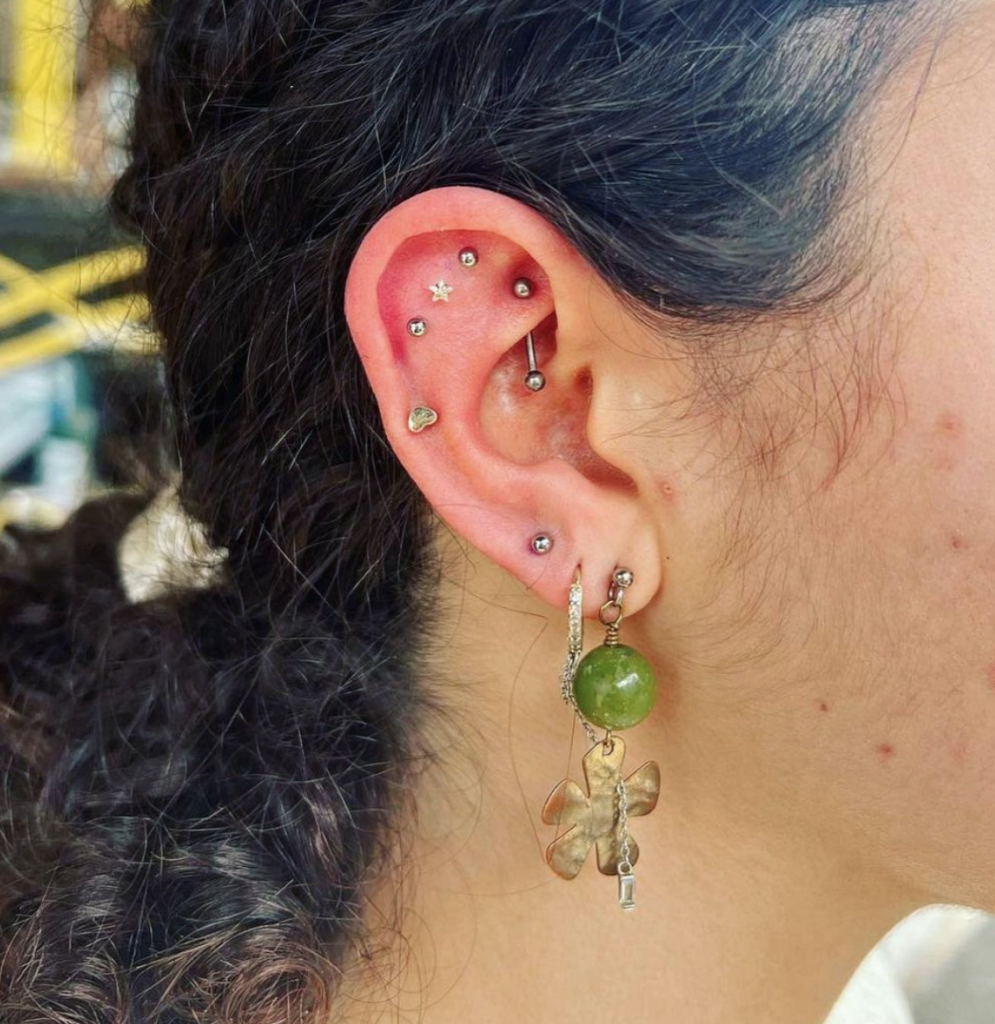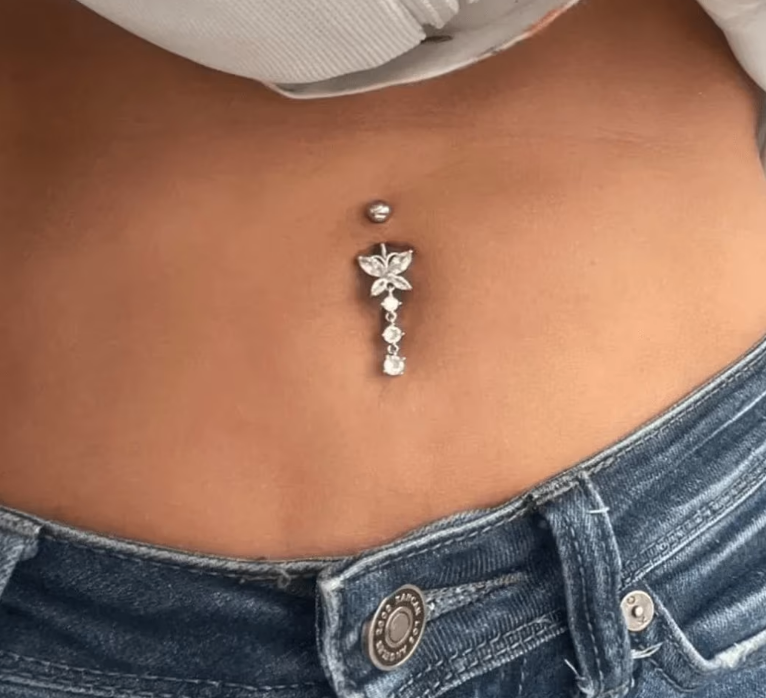A piercing is a decorative or cultural practice that involves making a hole in the body’s skin or cartilage to insert jewelry. Common piercing locations include the ears, nose, eyebrows, lips, tongue, navel, and various parts of the body. Piercings have been a part of different cultures and civilizations throughout history and are now a popular form of body modification and self-expression in many societies.
The process of getting a piercing is typically done by a professional piercer or a trained practitioner. Here’s a general overview of how piercings are made:
- Preparation: The piercer will start by cleaning the area around the intended piercing site to reduce the risk of infection.
- Marking: The piercer will mark the exact spot where the piercing will be placed. This step ensures that the piercing is accurately positioned and aligned according to the client’s preference.
- Piercing: Using a sterilized hollow needle or a specialized piercing gun, the piercer will quickly and precisely create the hole through the skin or cartilage. The needle or jewelry is then inserted into the newly made hole.
- Jewelry: After the hole is made, the piercer will immediately insert the chosen jewelry piece into the piercing site. The jewelry typically consists of a stud or a ring.

As for the pain, the level of pain experienced during the piercing process varies depending on the individual’s pain tolerance, the location of the piercing, and the method used. Some common observations are:
- Earlobes: Generally considered one of the least painful piercing locations.
- Nose: Can be a bit more uncomfortable due to the cartilage.
- Tongue: Tends to be quick, but there might be some discomfort and swelling afterward.
- Navel: Pain level can vary, but it’s generally moderate.
It’s important to note that everyone’s pain perception is different, so what might be uncomfortable for one person may not be the same for another. Additionally, the initial pain usually subsides quickly after the piercing is complete.
Aftercare is essential for proper healing and to prevent infections. Professional piercers will provide instructions on how to care for the new piercing, which typically includes regular cleaning with a saline solution and avoiding touching the piercing with dirty hands.
If you’re considering getting a piercing, make sure to research the procedure, choose a reputable piercing studio, and follow the aftercare guidelines to ensure a safe and successful piercing experience.
For further informations get in touch with our team at Mr Tattoo Rabat, we will be happy to talk to you.

